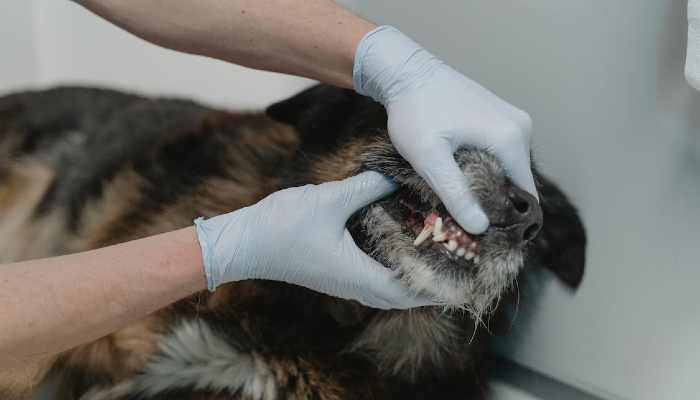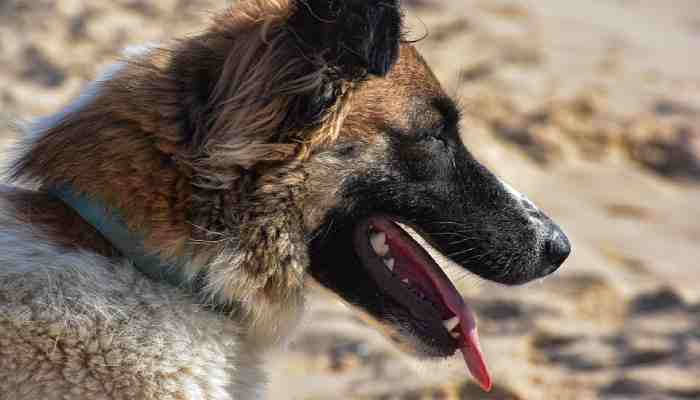It’s a fact that most of the dog owners never check their dogs’ teeth on a regular basis and that’s why many dogs show the significant signs of oral pathology. Mostly, pet owners take their dogs to veterinarians for routine vaccinations or for other minor afflictions. But they usually surprise and shock when the veterinarians display their pet’s sore and infected gums, loose teeth or rotting tooth sockets to them. Like humans, dogs can also suffer from periodontal diseases and it’s not something to ignore. It is extremely important for our pets to have a good oral hygiene because the bad oral condition can reach much farther than their teeth. The oral cavity of dogs is a perfect incubator for all sorts of microorganisms to grow on and if once the pathogenic organisms flourish inside the mouth of your pets, it ensures trouble.
Moreover, for your dog’s overall happiness, healthy teeth and gums are crucial. When you take a good look inside your dog’s mouth daily, you can keep your dog’s teeth healthy and free from most of the dental diseases like plague, tartar, etc. The consequences of dental problems in dogs are hazardous and can lead to loss of appetite and broken or lost teeth. If bacteria get into the bloodstream of your pet through diseased gums, then it can cause a great damage to other organs as well. It has been estimated that dogs with regular dental care live longer as compared to those that are ignored by their owners. There are several factors like age and general health status, diet and chewing behaviour, grooming habits, mouth environment, breed and tooth alignment, etc, that can play an important role in the formation of plaque, tartar, or in the development of various periodontal diseases.
What Is Plague & Tartar
Plaque is a gummy substance that usually develops within a few hours after a meal on the teeth of your pet. Within 24 hours, plaque starts to get harder as soon as it combines with salts that are present in the saliva. The plaque eventually transforms into tartar when it continues to accumulate and mineralize on the teeth of your pet. Tartar, also called calculus, is rough and porous and can develop above and below the gum line. You can easily notice tartar on your dog’s teeth because of its brown and rough appearance. With the build-up of tartar, bad breath and inflammation of the gums is also noticeable. If the plaque and tartar is not removed from your dog’s teeth, it can cause many dental problems such as gingivitis and periodontal disease in dogs.
What Effects Can Plaque & Tartar Cause?
When checking your dog’s mouth, there are a number of different signs to look out that show your pet has dental issues like inflamed gums, dis-coloured teeth, loss of teeth, bad breath, bleeding gums, pus inside the mouth, drooling, etc. If your dog displays any of these symptoms, contact your vet as soon as possible because dental issues can lead to severe consequences. For example, too much plaque on your dog’s teeth can cause inflammation or reddening of the gums, called gingivitis. Initially, gingivitis can make your pet’s gum more likely to bleed. If plaque is not removed over time, it hardens and mineralizes into tartar or calculus and this browny yellow hard substance provide a perfect surface on your dog’s teeth to stick more plaque on it and thus, speeding up the whole process. If gingivitis is left untreated, it enhances the process of periodontitis which may lead to tooth mobility, loss of tooth, and severe infections. Every time your dog chews, the bacteria get its way to enter the bloodstream, causing infections in the heart, lungs and kidneys. Bad breath (halitosis) is also one of the leading effects of severe gum disease and it is the early warning sign of dental problems. So never ignore it and take your dog to vet for oral and dental checkup as soon as possible. The dental problems can be painful, but most pets are extremely good at covering up the signs of pain. If you want to maintain the oral health of your pet, regular oral checkup, professional dental cleaning products and brushing your dog’s teeth is necessary. So, start taking a good care of your dog’s teeth today before it’s too late.


